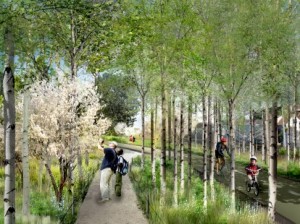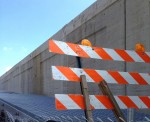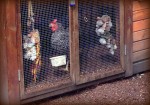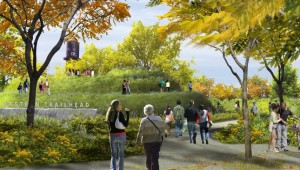
Should we take a month-long rafting trip down the Amazon, or trekking up to the top of Everest, these were two options from a list of potential adventures my son, (Lane) and I compiled. With him starting at Northwestern in a few weeks, it seemed a milestone that called out for some great journey- An opportunity to test our fortitude, combat fear and bond as father and son. Our minds filled with visions of Odysseus path to Ithaca, Lewis and Clark mapping out a continent, but as often does, reality lowered our sights.
I could speak of the Large, looming tuition costs and my responsibilities at Urban Insurance and reasons why such an adventure were not possible; but I would be neglecting to mention that our mutual fear of spiders, insects and snakes would rule out sleeping in a jungle. As for Everest, even the Base Camp elevation of 17,700 feet, would result in air far too thin for a father and son team who’s asthma mandates medication to ride the CTA. No we needed something closer to home and further from danger.
It was Lane that suggested we walk the length of the “Bloomingdale Trail.” He uncovered the path, after some brief research online, where he read of how the former train line, abandoned in the late 1990s, had been converted into a collections of parks linked by miles of former train tracks. The website was chocked-full of picture of gardens and prairie grass- couples looking lovingly into each other’s arms as they sat on a bench. Images of families strolling slowly or pushing their kids on swings. All of this green space to be enjoyed while views of Chicago’s skyline are in the background. How could we NOT spend the day roaming such a beautiful and vibrant part of Chicago, more to the point, how could we not have visited these miles of trails before today?
The Bloomingdale eastern most point begins at Walsh Park, 1722 N. Ashland Ave, less than a mile from our home; so we select to leave our car at home and walk, still baffled that we had not seen this oasis on prior walks and bike-rides. Three blocks in and our enthusiasm was high, despite our walk taking us under a graffiti covered viaduct, that looked more like a location a director would select to film a drug deal gone bad, than the approaching entrance to a world-class park. We do arrive at Walsh Park and find it to be a small pleasant neighborhood playground with a few families enjoying the nice weather. To one-side we see a fence separating the park from some parked construction equipment. All indications led us to conclude we had found the trail, but this particular set of stairs had not been completed.
 “Dad,” they can’t build the entire place simultaneously, we need to walk to the next entry point.” so we follow The street a few more block till we can find a point to ascend to the elevated path of beauty that awaits. Walking down Bloomingdale Ave, two thoughts struck me: why have I never heard of this street, and when did they build all these up-scale homes. Well in truth, one more question periodically popped into our conversation, “How do we get up-there?”
“Dad,” they can’t build the entire place simultaneously, we need to walk to the next entry point.” so we follow The street a few more block till we can find a point to ascend to the elevated path of beauty that awaits. Walking down Bloomingdale Ave, two thoughts struck me: why have I never heard of this street, and when did they build all these up-scale homes. Well in truth, one more question periodically popped into our conversation, “How do we get up-there?”

We passed a home with a backyard prominently displaying a habitat for two roosters- they seemed happy. Intersecting streets were familiar- “Hey, Jake lives over there,” he was right, we just never arrived via the East-West running Bloomingdale Avenue. Urban areas are filled with surprises, easily missed, as we all hurry through our days propelled by our cars and deadlines. That day we were explorers. We were on-foot with the time and inclination to observe rather than reach a destination.
It had been nearly two hours with little more than a few snacks to keep us going; so we detoured down Damon walking a few blocks south, passing through “Wicker Park” and a dozen restaurants before selecting one with outdoor seating. Each of us armed with an iPhone, we researched some history on the rail-line as well as the surrounding neighborhoods of Wicker Park, Humboldt Park, Logan Square and Bucktown. Chicago is a city of immigrants, each of these areas were built, shaped and then constantly reshaped with each new ethnic wave. Streets were given German names till a historic influx of Polish immigrants changed them as they called Chicago home. Jews fleeing Nazi controlled parts of Europe were later followed by newcomers from Mexico. A city is a living, every-changing thing, new people and new technology result in evolving needs; so the landscape alters to meet those requirements.

Well nourished, we returned to our search for the Bloomington trail pictured so beautifully on their website. I should have recognized the ease with which Photoshop, in the hands of an architect, can produce photo-realistic renderings of what they hope will be the product of the completed development. Rather than the “Hanging gardens of Babylon,” we found barricaded ramps leading to what will be parkland once they complete the infrastructure, and the fill the spaces with the plantings to hopefully match the pictures (and now my expectations).
The array of parks connected by miles of former train tracks, were simply far from completion. The great new wonder we sought failed to ready for our walk, but our day was far from a waste. We saw more, learned more about Chicago, and we observed the making of what will be a great addition to our city. We also went exploring without the need for malaria shots for a trip down the Amazon river or oxygen masks mandatory for us even reaching the base-camp of Everest. As the days slip by till Lane heads-off to that distant land of Evanston, every moment spent hanging-out together is an adventure I will cherish forever.
. Larry Lubell / Urban Auto Insurance
